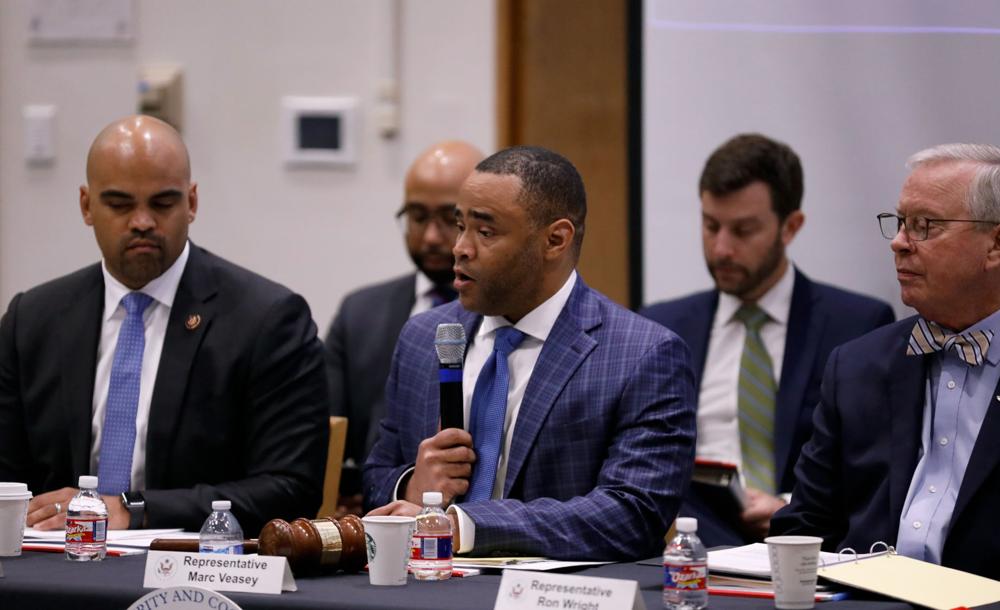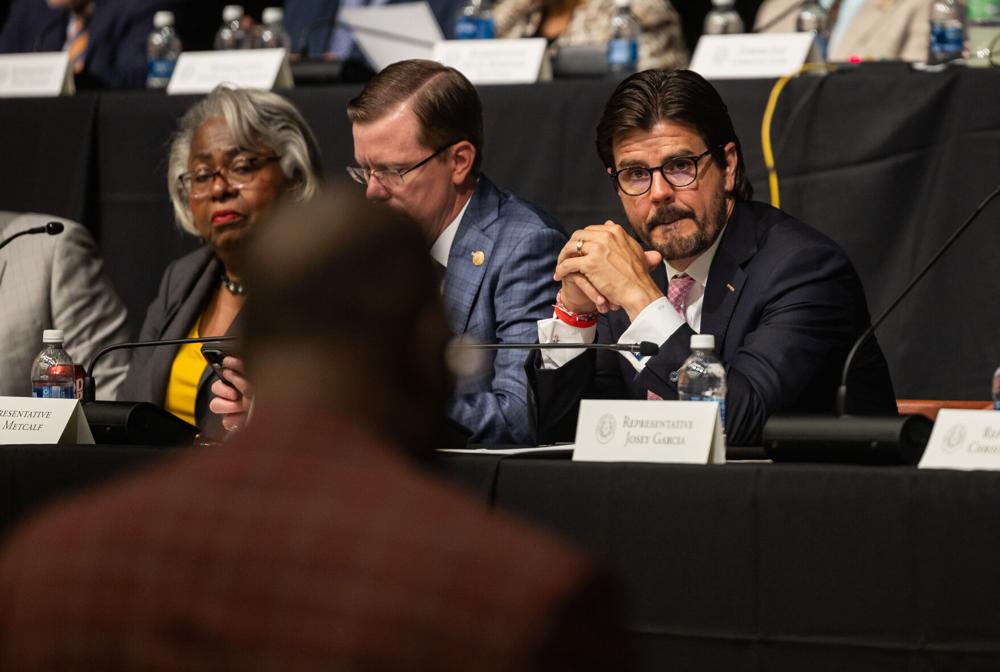
Texas Republican lawmakers released their first draft of the state’s proposed congressional map Wednesday, which looks to fulfill the plan to flip five seats to Republican control in the 2026 midterm elections.
House Bill 4, introduced by Texas Rep. Todd Hunter, R-Corpus Christi, includes a potentially revised map that targets Democratic congressional members in Austin, Dallas, Houston and South Texas. The draft will likely be changed before the final version is approved by both chambers and signed by Gov. Greg Abbott.
A public hearing on the proposed map is set for Friday at the Texas Capitol.
The mid-decade redistricting effort follows a campaign by President Donald Trump's administration to expand Republicans’ majority in the House — five of which would come from flipping Democratic seats.
The midterm elections typically favor the president’s opposing party, and Trump needs to maintain a U.S. House of Representatives majority to successfully push through his policies.
Currently, Republicans hold 25 Texas congressional seats and Democrats have 13. Republicans have a 219-212 advantage in the U.S. House, with four seats vacant. Several states led by Democrats, including California, have stated their intention to begin the redistricting process in retaliation.
The map immediately faced backlash from Democrats, who have been criticizing the redistricting process as racist and diluting voters of color. Democrats have also threatened to stall the process by fleeing the state.
“Let’s be clear — this map is racist, it’s illegal, and it’s part of a long, ugly tradition of trying to keep Black and brown Texas from having a voice,” U.S. Rep. Marc Veasey, D-Fort Worth, said in a statement. “What Donald Trump and Greg Abbott are doing isn’t about democracy — it’s about consolidating power.”
Under the proposed map, Veasey’s district, which is currently split across Tarrant and Dallas counties, would remain solidly Democratic but drop all of Fort Worth — his hometown and political base. His district was one of four specially mentioned in a letter from the Department of Justice as “unconstitutional ‘coalition districts.’”
A coalition district is one predominantly made up of minority voters who tend to vote together.
Gov. Abbott added redistricting to his agenda for the special session, which started July 21, following the Department of Justice’s letter.
The proposed map splits Tarrant County voters among multiple neighboring Republican districts and would go from having seven representatives to five.
UTA, currently represented by U.S. Rep Roger Williams, R-Willow Park, would be represented by U.S. Rep. Jake Ellzey, R-Waxahachie.
Hundreds of Tarrant County residents attended a packed public hearing at UTA on Monday, where speakers and lawmakers criticized the proposed map’s absence. Other regional hearings were held across the state. The proposed map was shared two days after the hearings.
Republicans have said publicly that the current map, drawn in 2021, did not violate the Voting Rights Act of 1965. However, in an interview with FOX 4, Gov. Abbott defended the redistricting effort and said he’s not worried about criticisms, saying that he lets Trump dictate the process.
“We want to make sure that we have maps that don't impose coalition districts, while at the very same time ensuring that we will maximize the ability of Texans to be able to vote for the candidate of their choice,” he said.
Other targeted areas include:
9th Congressional District: U.S. Rep. Al Green, D-Houston
28th Congressional District: U.S. Rep. Henry Cuellar, D-Laredo
32nd Congressional District: U.S. Rep. Julie Johnson, D-Farmers Branch
34th Congressional District: U.S. Rep. Vicente Gonzalez, D-McAllen
@DangHLe
















